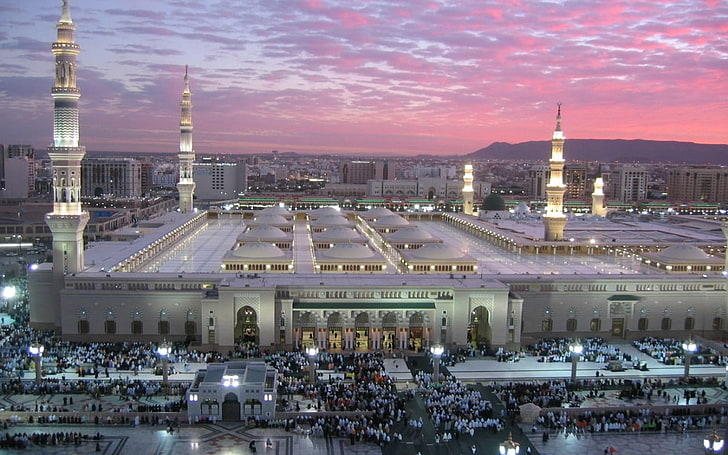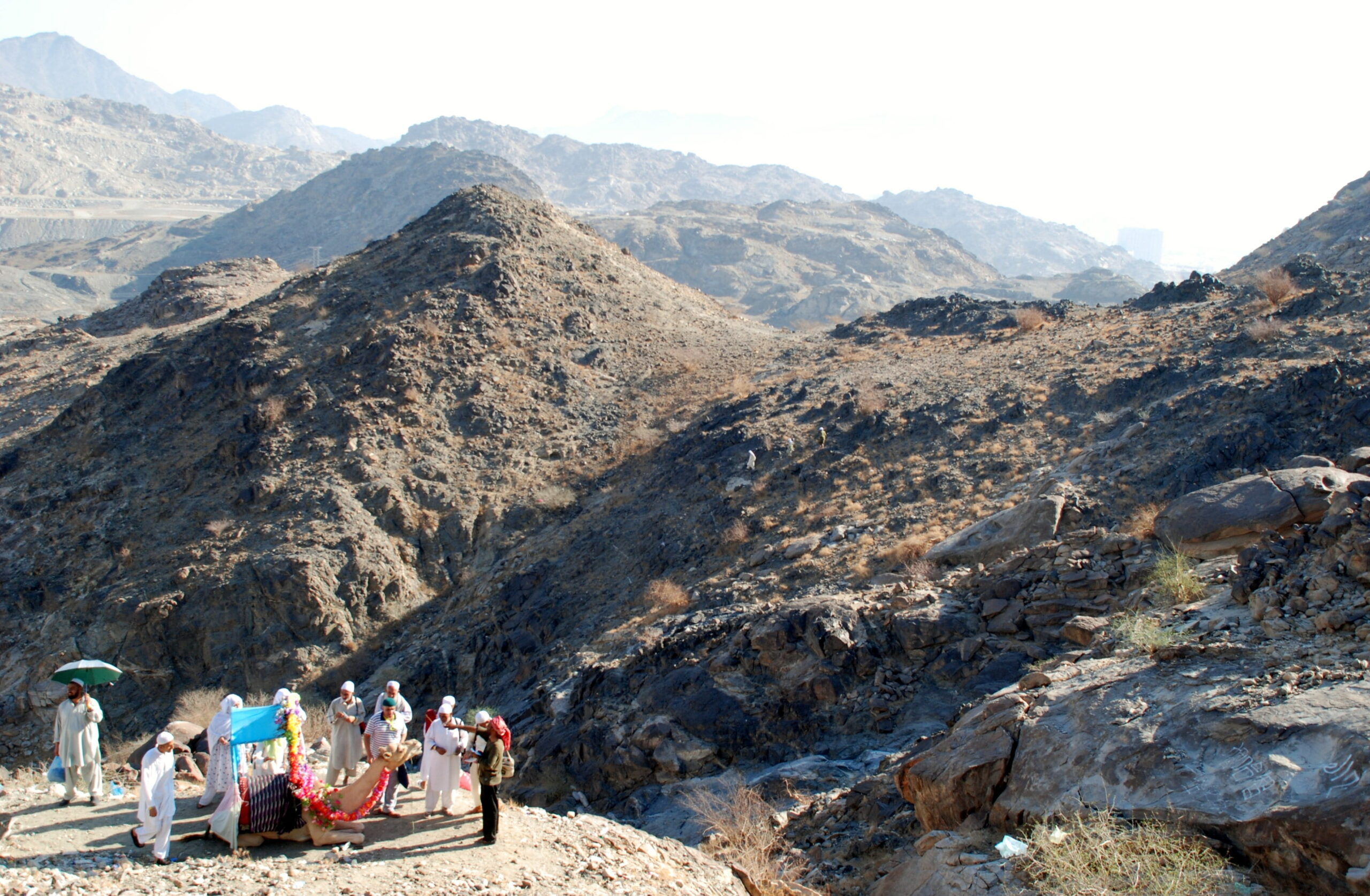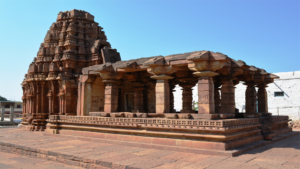Difference between Hajj and Umrah and their cultural significance
Both Hajj and Umrah represent spiritual voyages within Islam, seeking Allah’s blessings. Undertaking these journeys leads to spiritual growth and the chance for absolution. Despite shared rites, the core divergence arises in observance method and significance levels. Let’s delve into their distinctions.
What is Hajj?
Hajj (also called Hadj) , an obligatory Islamic pilgrimage to Mecca, Saudi Arabia, holds profound significance for Muslims. It’s a religious duty, mandated for physically and financially capable adults, emphasizing a lifetime obligation.
The journey’s spiritual essence is encapsulated in the collective pursuit of divine blessings and forgiveness. Ultimately, Hajj exemplifies unity, devotion, and the enduring legacy of Islamic tradition.
What is Umrah?
The term “Umrah,” derived from Arabic, signifies “to visit a populated place.” While not obligatory, Umrah holds significant importance for Muslims, involving a pilgrimage to the sacred Masjid al-Haram in Mecca.
Most pilgrims undertake the Umrah pilgrimage predominantly during Ramadan, or in the preceding Islamic lunar months, Rajab and Sha’ban. Muslims consider these sacred months to be a time of heightened mercy, increased acceptance of prayers, and greater rewards for devout worship.
Umrah can be undertaken by Muslims at any age, without any lifetime limitations. However, women below 45 must be accompanied by a mahram, a male relative aged 17 or older. For women above 45, traveling with tour groups without a mahram is permitted.
Major Differences between hajj and Umrah
Umrah can be undertaken by Muslims at any age, without any lifetime limitations. However, women below 45 must be accompanied by a mahram, a male relative aged 17 or older. For women above 45, traveling with tour groups without a mahram is permitted.
| Criterion | Umrah | Hajj |
|---|---|---|
| Significance | Suggested but not Obligatory. | Compulsory pilgrimage, one of the fundamental tenets of Islam. |
| Season Timings | Can be undertaken at any time/ Season of the year. | Designated time within the month of Dhu al-Hijjah |
| Obligatory Acts | Ihram, Tawaf, Sayi, Shaving/Trimming | Ihram, Arafah standing, Muzdalifah stay, Stoning Jamarat, Shaving, Farewell Tawaf |
| Time Required | Few hours | 5-6 Days |
| Pillars that are covered | Ihram, Tawaf, Sayi, Tahallul | Ihram, Saee, Waqfat, Tawaf al-Ifaadah |
When was First Hajj and Umrah performed?
Hajj
From these sources, Nasir Khusraw performed the first Hajj in 1050, followed by Ibn Jubayr in 1184 and Ibn Battuta in 1326. Prophet Muhammad’s first and only Hajj occurred in the year 10 AH (632 CE), known as Hajjat al-Wida.
The First Pilgrimage or Umrah of Dhu’l-Qada took place on the fourth day of Dhu al-Qi’dah 7 AH (629 CE), following the Treaty of Hudaybiyyah in 6 AH (628 CE). Mohammed instructed his followers to perform the Hajj in the ninth year of the Islamic calendar, the first year after conquering Mecca.
Umrah
In Islamic history, Umrah’s origins trace back to 622 CE when Prophet Muhammad (PBUH) advised Makkah Muslims to migrate to Madinah due to persecution. Later, a dream prompted the desire for Umrah.
During this time, Prophet Muhammad (PBUH) and companions wished to perform Umrah, but Quraysh feared an attack. Despite efforts for peaceful entry, Quraysh blocked their passage.
Negotiations led to the Treaty of Hudaibiyyah, permitting Umrah the following year. In 229 CE, Prophet Muhammad (PBUH) fulfilled Umrah with 2000 companions, obeying the treaty’s terms.
How is Umrah performed?
Umrah Preparations
- Preliminary Ablutions and Niyyah: Pilgrims cleanse themselves and express intention (Niyyah) before embarking on Umrah.
- Ihram Attire and Miqat Arrival: Pilgrims wear sacred Ihram attire and reach designated Miqat points, signaling readiness for Umrah.
- Talbiyah Supplications and Sacred Boundaries: While nearing Miqat, pilgrims recite Talbiyah, acknowledging the sacred boundaries of Mecca.
- Specific Guidelines and Muhrim Status: Following guidelines, pilgrims become Muhrim, observing grooming rituals and changing into Ihram.
- Miqat Pronouncement and Repeated Talbiyah: Pilgrims declare Niyyah at Miqat, continuously reciting Talbiyah while moving towards Mecca.
- Two Rakats of Salah al-Ihram: Performing two Rakats of Salah al-Ihram with covered heads marks the sacred initiation.
- Miqat Approach and Tawaf Commencement: As Miqat approaches, pilgrims announce Niyyah, recite Talbiyah, and start Tawaf before Mecca.
- Guided Rituals and Umrah Commencement: Pilgrims follow set rituals, starting Umrah with Tawaf, Sa’iy, and a spiritually enriching experience.
- Spiritual Reflection and Gratitude: After Umrah, pilgrims reflect and express gratitude to Allah for the sacred journey.
Practices and Rituals
- Ihram: Intention for Pilgrimage
- Upon reaching the Miqat, worshippers enter a holy state known as Ihram, marking the boundary for pilgrimage initiation.
- After cleansing at the Miqat, pilgrims change into Ihram attire, recite the talbiyah prayer, and declare their intention for Ihram.
- Repeating the talbiyah, pilgrims express their intention and recite takbir while approaching the Kaaba and the revered Black Stone.
- Tawaf: Around the Holy Kaaba
- Perform Tawaf by circling the Kaaba seven times, kissing the Black Stone, and praying two rakats.
- Valid prayers require reciting du’aa throughout the seven Tawaf circles, concluding the seventh round at the starting point.
- Sa’I: Seven Rounds between Safa and Marwah in Worship
- After Tawaf, commence Sa’I, walking between Safa and Marwa, ascending Safa with devotion to view the Kaaba.
- Descend and move towards Marwah, reciting ‘Subhan Allah,’ and approaching the green pillars for seven rounds, each around 450 meters.
- Complete Sa’I; males shave or shorten hair, while females cut hair by half or less.
How is Hajj performed?
Hajj Preparations
Hajj preparations commence on the 8th day of Dhu al-Hijjah, as pilgrims express their intention to undertake the sacred journey by donning the Ihram garments.
Declaring the Hajj Journey from Miqat – Setting the Intention for Hajj
Before embarking on their journey to the Al Masjid Al Haram, the sacred boundary of Mecca, pilgrims are required to assume the state of Ihram, marking the beginning of their pilgrimage to Hajj. This sacred act involves wearing the Ihram attire and traversing through one of the five designated Miqats in the Haram boundary.
Here is an overview of the destination options and their corresponding Miqats for pilgrims traveling to Saudi Arabia for Hajj:
- Dhu’l Hulaifah (Abbyar Ali): Pilgrims arriving from or through Madina first for Hajj al-Tamatt’u.
- Al-Juhfah (near Rabigh): Pilgrims from Syria, Morocco, or Egypt.
- Qarn-al manazil (As-Sail Al-Kabeer): Pilgrims from Najd or Taif.
- Yalamlam (Sa’adiyah): Pilgrims from India, Pakistan, or Yemen.
- Dhat `Irq: Pilgrims from or through Iraq.
Prior to departing from their residence towards Mecca’s sacred boundary, pilgrims must undergo the ritual of Ihram, a combination of Niyyah and Talbiyah. Niyyah represents the internal intention for the act of worship, while Talbiyah is a special supplication uttered to enter the state of Ihram.
Adherence to specific guidelines is mandatory for all pilgrims before entering the Miqat and becoming a Muhrim. To attain this state, pilgrims must follow the Prophet’s (PBUH) instructions:
- Performing ablutions: Including mandatory rituals like Ghusl, and preferable actions such as perfuming the head, clipping nails, trimming the mustache, and shaving unwanted body hair.
- Changing into Ihram attire: Men wear two-pieced white Ihram sheets (Izar and Rida), while women wear regular Islamic clothing. Both genders should don flip-flops or sandals exposing the middle bones of the midfoot.
- Performing two Rakats of Salah al-Ihram: Covering the head during the prayer.
- Pronouncing the Niyyah and Reciting Talbiyah: Expressing the intention and reciting the supplication while traversing the Miqat stations in the sacred boundary of the Grand Holy Mosque until initiating Tawaf before proceeding to Mecca for the subsequent step of Umrah.
Hajj Steps
Adherence to specific guidelines is mandatory for all pilgrims before entering the Miqat and becoming a Muhrim. To attain this state, pilgrims must follow the Prophet’s (PBUH) instructions:
- Reassume Ihram and the intention to perform Hajj:
After completing Umrah, pilgrims must reassume Ihram and declare intentions for Hajj, repeating step 1. - Travel to Mina:
Following morning prayers, head to Mina for a day of ritual prayers as per Quran. - Travel to Mt. Arafat to perform Wafuq:
On the 9th day, travel to Mount Arafat, reciting Istaghfar and performing Duhr and Asr. - Offer Prayers in Muzadalifah:
Post-sunset, go to Muzadalifah for evening prayers and rest before the stoning ritual. - Perform Rami in Mina:
On the 10th day, perform Rami in Mina, throwing pebbles at Jamrat al-Aqabah. - Animal Sacrifice – Nahr:
After Rami, perform animal sacrifice (Nahr) symbolizing detachment and submission to Allah. - Halq (shaving the head) or Taqsir (clipping or shortening of the hair):
Men shave heads or clip hair; women clip a lock as a symbol of detachment. - Perform Tawaf and Sa’iy:
Perform Tawaf and Sa’iy, reflecting on the pilgrimage experience. - Repeat Stoning at Mina After Sunset On the 11th and 12TH day of Dhu al-Hijjah:
Repeat stoning at Mina on the 11th and 12th days, facing the Jamarah. - Perform the Farewell Tawaf:
Conclude with the farewell Tawaf, circumambulating the Kaaba anticlockwise seven times, marking the end.
Conclusion
Both Umrah and Hajj hold immense spiritual significance. Umrah offers a voluntary, shorter pilgrimage, allowing Muslims to enhance their devotion. Hajj, an obligatory and extensive journey, holds unparalleled value, marking a profound annual commitment.









